GREFFE DE CHEVEUX AFRO-AMÉRICAINS
Défis et Considérations dans la Transplantation de Cheveux Afro-Américains
La greffe de cheveux est une procédure sophistiquée qui nécessite une compréhension approfondie des différents types de cheveux pour obtenir des résultats optimaux. Parmi ceux-ci, les cheveux afro-américains présentent des défis uniques qui exigent un niveau plus élevé de précision, d'expertise et de soin par rapport aux types de cheveux non bouclés et raides. Ce blog explore les raisons de ces défis et les méthodologies employées pour y faire face. Il existe deux techniques principales utilisées pour extraire les follicules pileux dans la greffe de cheveux : la Transplantation d'Unités Folliculaires (FUT) et l'Extraction d'Unités Folliculaires (FUE). La FUT, la plus ancienne des deux méthodes, consiste à retirer une bande de tissu du cuir chevelu de la zone donneuse, à partir de laquelle les follicules pileux sont ensuite disséqués et implantés dans la zone receveuse. Cette méthode, bien qu'efficace, peut laisser une cicatrice linéaire, la rendant moins désirable pour les patients qui préfèrent porter leurs cheveux courts. La FUE, en revanche, est la technique la plus avancée et préférée, en particulier pour les patients aux cheveux bouclés tels que les Afro-Américains. La FUE consiste à extraire individuellement les follicules pileux à l'aide d'un dispositif de punch spécialisé. Cette méthode laisse des cicatrices minimes et est privilégiée pour sa capacité à extraire un nombre maximal de greffons de cheveux avec précision. En raison de son efficacité et de sa nature moins invasive, la FUE est devenue la méthode de prédilection pour l'extraction chez les patients afro-américains.
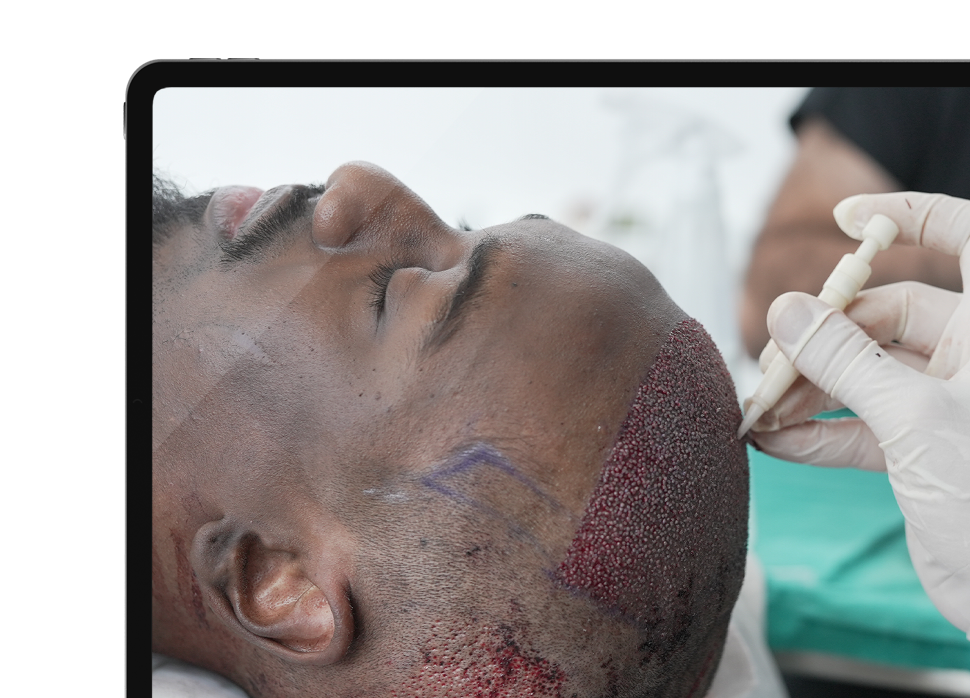
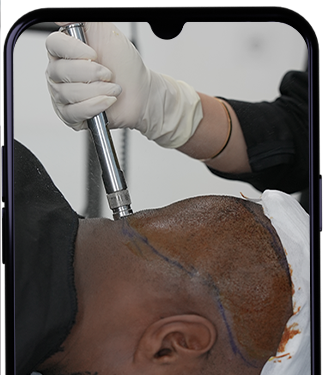
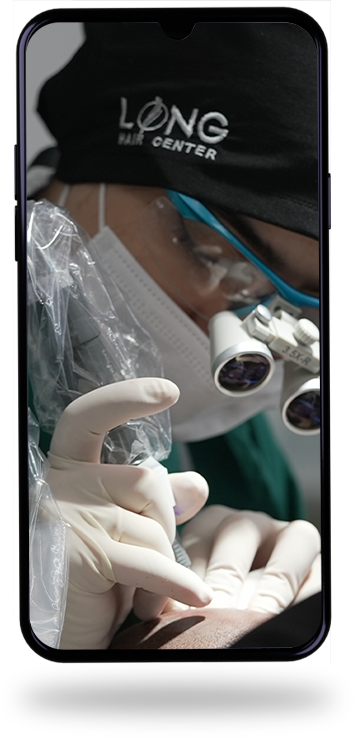
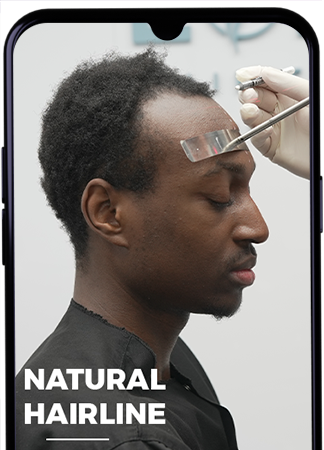
La Complexité de l'Extraction des Greffons de Cheveux de Texture Afro
L'une des différences les plus significatives entre les cheveux afro-américains et les autres types de cheveux est la structure unique des cheveux de texture afro. Contrairement aux cheveux raides ou ondulés, les cheveux afro sont bouclés à la fois au-dessus et au-dessous de la surface de la peau. Cette caractéristique rend l'extraction des greffons de cheveux plus complexe et nécessite une approche plus méticuleuse. Lors de la réalisation de greffes de cheveux sur des personnes aux cheveux raides, le dispositif de punch utilisé pour l'extraction a généralement un diamètre de 0,9 mm et une longueur d'environ 4 mm. Ce punch rotatif droit est suffisant pour extraire les follicules pileux selon un schéma non bouclé. Cependant, cet outil n'est pas adapté aux cheveux de texture afro en raison de la boucle naturelle des cheveux sous la surface de la peau. La nature bouclée des follicules pileux afro sous la peau signifie que l'utilisation d'un punch standard pourrait endommager les follicules, entraînant un taux de réussite plus faible et nuisant potentiellement au résultat global de la greffe. Pour s'adapter à la nature bouclée des cheveux afro-américains, le punch utilisé pour l'extraction doit être ajusté. Les spécialistes emploient souvent un punch avec une longueur plus courte et un diamètre modifié qui s'aligne sur le schéma de bouclage du follicule pileux. Cette adaptation permet une extraction sûre des greffons, garantissant qu'ils restent intacts et sains, ce qui est crucial pour le succès de la greffe.

L'Avantage des Cheveux Afro pour Atteindre une Plus Grande Densité
Les cheveux de texture afro ont un avantage distinct sur les types de cheveux raides lorsqu'il s'agit d'atteindre la densité après la transplantation. En raison de la boucle naturelle et de l'épaisseur des cheveux afro, moins de greffons sont nécessaires pour créer une apparence de plénitude. Dans une étude récente, il a été observé que 3 500 greffons dans une greffe de cheveux afro-américaine pouvaient produire des résultats équivalents à 5 000 greffons chez un patient aux cheveux raides. Cela signifie que les patients afro-américains peuvent atteindre la densité souhaitée avec moins de greffons, ce qui rend la procédure plus efficace et souvent plus rentable.
Cependant, la clé pour atteindre cette densité réside dans la qualité et la santé des greffons extraits. Si les greffons sont endommagés lors de l'extraction, le taux de réussite de la greffe diminue, entraînant des résultats moins satisfaisants. Par conséquent, il est impératif que le chirurgien qui s'occupe de la procédure ait une expérience substantielle et une compréhension approfondie des cheveux de texture afro. L'extraction soigneuse et précise de chaque greffon garantit que les racines des cheveux restent viables, ce qui conduit à une meilleure croissance et à un résultat d'apparence plus naturelle après la greffe.
La greffe de cheveux chez les patients afro-américains est un domaine spécialisé qui nécessite une approche nuancée en raison de la structure unique des cheveux de texture afro. La complexité de la procédure, des techniques d'extraction modifiées à la manipulation soigneuse des greffons, souligne l'importance de choisir un spécialiste de la greffe de cheveux hautement qualifié et expérimenté. Bien que le processus puisse être plus difficile et plus long que les greffes de cheveux non bouclés, les résultats peuvent être tout aussi, sinon plus, gratifiants. La densité naturelle et le schéma de bouclage des cheveux afro offrent des avantages distincts, permettant aux patients d'obtenir un aspect plus fourni et plus naturel avec moins de greffons. Cependant, ce succès dépend de l'expertise du chirurgien, ce qui rend crucial pour les patients de rechercher des professionnels bien au fait des subtilités de la transplantation de cheveux afro-américains.
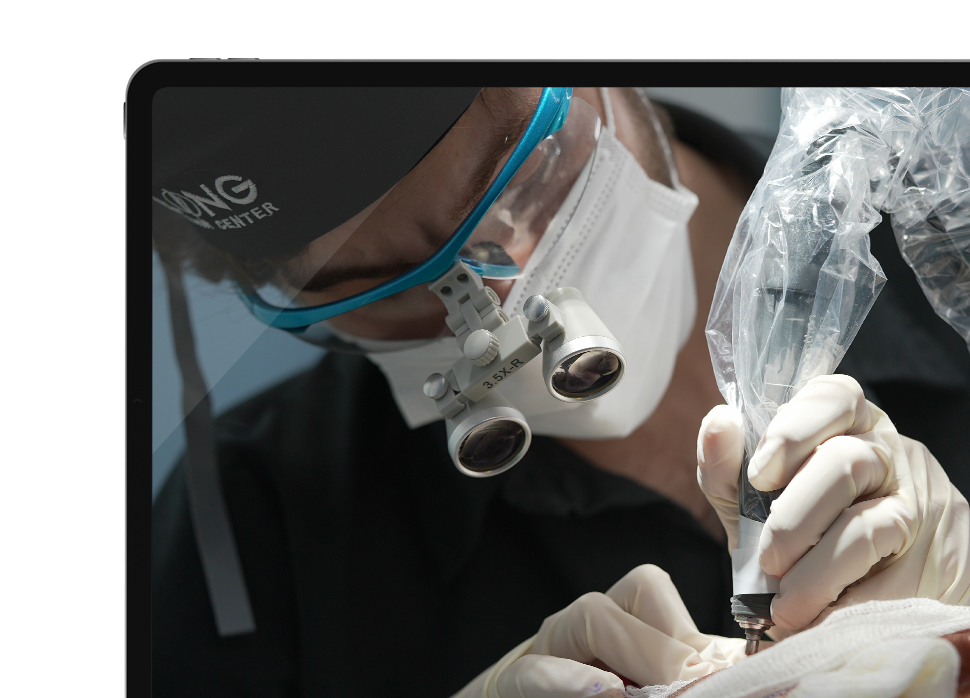
Défis et Considérations dans la Transplantation de Cheveux Afro-Américains
La greffe de cheveux est une procédure sophistiquée qui nécessite une compréhension approfondie des différents types de cheveux pour obtenir des résultats optimaux. Parmi ceux-ci, les cheveux afro-américains présentent des défis uniques qui exigent un niveau plus élevé de précision, d'expertise et de soin par rapport aux types de cheveux non bouclés et raides. Ce blog explore les raisons de ces défis et les méthodologies employées pour y faire face. Il existe deux techniques principales utilisées pour extraire les follicules pileux dans la greffe de cheveux : la Transplantation d'Unités Folliculaires (FUT) et l'Extraction d'Unités Folliculaires (FUE). La FUT, la plus ancienne des deux méthodes, consiste à retirer une bande de tissu du cuir chevelu de la zone donneuse, à partir de laquelle les follicules pileux sont ensuite disséqués et implantés dans la zone receveuse. Cette méthode, bien qu'efficace, peut laisser une cicatrice linéaire, la rendant moins désirable pour les patients qui préfèrent porter leurs cheveux courts. La FUE, en revanche, est la technique la plus avancée et préférée, en particulier pour les patients aux cheveux bouclés tels que les Afro-Américains. La FUE consiste à extraire individuellement les follicules pileux à l'aide d'un dispositif de punch spécialisé. Cette méthode laisse des cicatrices minimes et est privilégiée pour sa capacité à extraire un nombre maximal de greffons de cheveux avec précision. En raison de son efficacité et de sa nature moins invasive, la FUE est devenue la méthode de prédilection pour l'extraction chez les patients afro-américains.
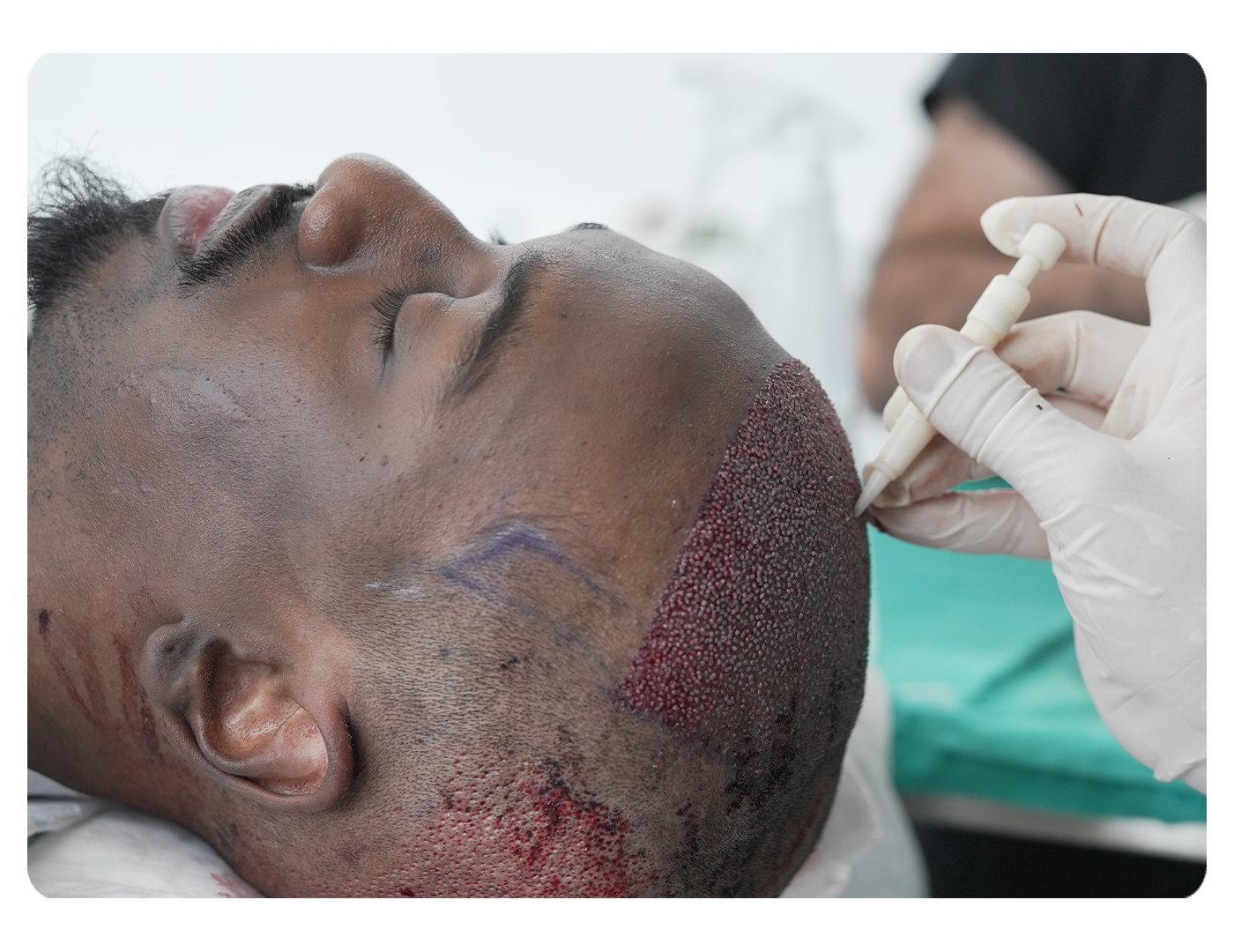
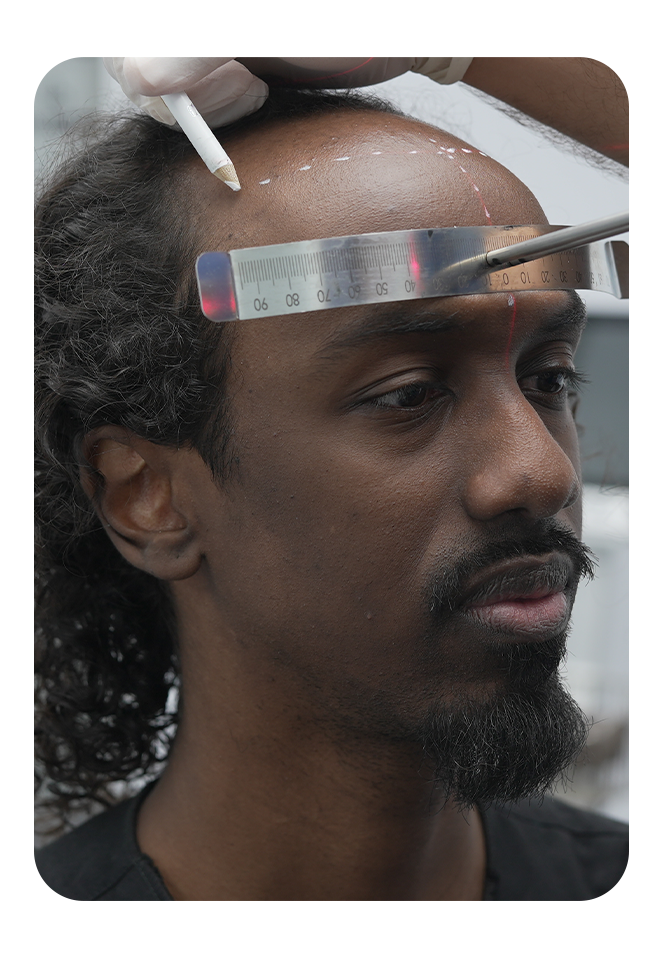
L'essor de l'Implantation Directe de Cheveux (DHI)
Bien que la FUE reste un choix populaire, l'Implantation Directe de Cheveux (DHI) est apparue comme la méthode préférée pour la transplantation de cheveux afro-américains. La DHI est une version affinée de la technique FUE, où les follicules pileux extraits sont directement implantés dans la zone receveuse à l'aide d'un outil spécialisé appelé Stylo Implanteur Choi. Ce stylo permet un plus grand contrôle sur l'angle, la profondeur et la direction de chaque follicule pileux lors de l'implantation, ce qui est particulièrement bénéfique pour les cheveux de texture afro. La DHI offre plusieurs avantages, notamment une manipulation réduite des greffons de cheveux, ce qui minimise le risque de dommages, et la capacité d'atteindre une densité plus élevée avec un placement plus précis des follicules. Compte tenu de la boucle et de la texture uniques des cheveux afro-américains, la précision et le contrôle offerts par la DHI en font la méthode la plus appropriée pour obtenir des résultats naturels et esthétiquement agréables.
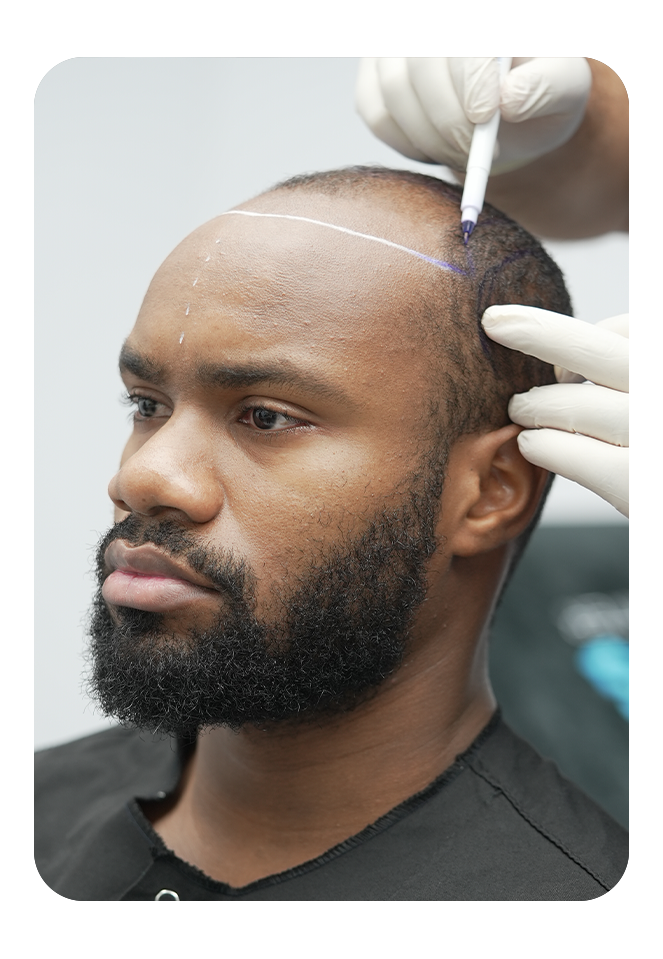
L'essor de l'Implantation Directe de Cheveux (DHI)
pages.afro.p1_3
La Complexité de l'Extraction des Greffons de Cheveux de Texture Afro
L'une des différences les plus significatives entre les cheveux afro-américains et les autres types de cheveux est la structure unique des cheveux de texture afro. Contrairement aux cheveux raides ou ondulés, les cheveux afro sont bouclés à la fois au-dessus et au-dessous de la surface de la peau. Cette caractéristique rend l'extraction des greffons de cheveux plus complexe et nécessite une approche plus méticuleuse. Lors de la réalisation de greffes de cheveux sur des personnes aux cheveux raides, le dispositif de punch utilisé pour l'extraction a généralement un diamètre de 0,9 mm et une longueur d'environ 4 mm. Ce punch rotatif droit est suffisant pour extraire les follicules pileux selon un schéma non bouclé. Cependant, cet outil n'est pas adapté aux cheveux de texture afro en raison de la boucle naturelle des cheveux sous la surface de la peau. La nature bouclée des follicules pileux afro sous la peau signifie que l'utilisation d'un punch standard pourrait endommager les follicules, entraînant un taux de réussite plus faible et nuisant potentiellement au résultat global de la greffe. Pour s'adapter à la nature bouclée des cheveux afro-américains, le punch utilisé pour l'extraction doit être ajusté. Les spécialistes emploient souvent un punch avec une longueur plus courte et un diamètre modifié qui s'aligne sur le schéma de bouclage du follicule pileux. Cette adaptation permet une extraction sûre des greffons, garantissant qu'ils restent intacts et sains, ce qui est crucial pour le succès de la greffe.
Lors de la réalisation de greffes de cheveux sur des personnes aux cheveux raides, le dispositif de punch utilisé pour l'extraction a généralement un diamètre de 0,9 mm et une longueur d'environ 4 mm. Ce punch rotatif droit est suffisant pour extraire les follicules pileux selon un schéma non bouclé. Cependant, cet outil n'est pas adapté aux cheveux de texture afro en raison de la boucle naturelle des cheveux sous la surface de la peau. La nature bouclée des follicules pileux afro sous la peau signifie que l'utilisation d'un punch standard pourrait endommager les follicules, entraînant un taux de réussite plus faible et nuisant potentiellement au résultat global de la greffe.

L'Importance de l'Expertise et de l'Expérience dans la Transplantation de Cheveux Afro-Américains
Compte tenu de la complexité de l'extraction des cheveux de texture afro, l'expérience et l'expertise du chirurgien jouent un rôle essentiel dans le succès de la procédure. Un spécialiste expérimenté de la greffe de cheveux, bien au fait des nuances des cheveux afro, est essentiel pour obtenir des résultats optimaux. Le processus d'extraction des greffons de cheveux de texture afro est considérablement plus délicat et prend plus de temps, car chaque greffon doit être soigneusement retiré un par un pour éviter la casse ou les dommages.
Le succès de la greffe dépend fortement du nombre de greffons sains qui peuvent être extraits. Dans le cas des cheveux afro-américains, il est possible d'extraire entre 3 000 et 3 500 racines de cheveux par session en utilisant la technique de punch modifié. Bien que ce nombre puisse être inférieur au nombre moyen de greffons pour les cheveux raides, la nature unique des cheveux afro offre un avantage en ce qui concerne la densité post-transplantation.
L'Avantage des Cheveux Afro pour Atteindre une Plus Grande Densité
Les cheveux de texture afro ont un avantage distinct sur les types de cheveux raides lorsqu'il s'agit d'atteindre la densité après la transplantation. En raison de la boucle naturelle et de l'épaisseur des cheveux afro, moins de greffons sont nécessaires pour créer une apparence de plénitude. Dans une étude récente, il a été observé que 3 500 greffons dans une greffe de cheveux afro-américaine pouvaient produire des résultats équivalents à 5 000 greffons chez un patient aux cheveux raides. Cela signifie que les patients afro-américains peuvent atteindre la densité souhaitée avec moins de greffons, ce qui rend la procédure plus efficace et souvent plus rentable.
Cependant, la clé pour atteindre cette densité réside dans la qualité et la santé des greffons extraits. Si les greffons sont endommagés lors de l'extraction, le taux de réussite de la greffe diminue, entraînant des résultats moins satisfaisants. Par conséquent, il est impératif que le chirurgien qui s'occupe de la procédure ait une expérience substantielle et une compréhension approfondie des cheveux de texture afro. L'extraction soigneuse et précise de chaque greffon garantit que les racines des cheveux restent viables, ce qui conduit à une meilleure croissance et à un résultat d'apparence plus naturelle après la greffe.
La greffe de cheveux chez les patients afro-américains est un domaine spécialisé qui nécessite une approche nuancée en raison de la structure unique des cheveux de texture afro. La complexité de la procédure, des techniques d'extraction modifiées à la manipulation soigneuse des greffons, souligne l'importance de choisir un spécialiste de la greffe de cheveux hautement qualifié et expérimenté. Bien que le processus puisse être plus difficile et plus long que les greffes de cheveux non bouclés, les résultats peuvent être tout aussi, sinon plus, gratifiants. La densité naturelle et le schéma de bouclage des cheveux afro offrent des avantages distincts, permettant aux patients d'obtenir un aspect plus fourni et plus naturel avec moins de greffons. Cependant, ce succès dépend de l'expertise du chirurgien, ce qui rend crucial pour les patients de rechercher des professionnels bien au fait des subtilités de la transplantation de cheveux afro-américains.
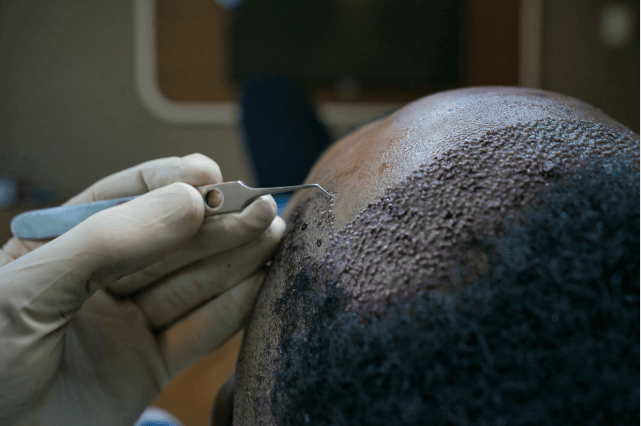

FREQUENTLY_ASKED_QUESTIONS
pages.hairTransplant.faq.a1
pages.hairTransplant.faq.a2
pages.hairTransplant.faq.a3
pages.hairTransplant.faq.a4
pages.hairTransplant.faq.a5
pages.hairTransplant.faq.a6


 Deutsch
Deutsch
 English
English
 français
français
 italiano
italiano
 Türkçe
Türkçe
 русский
русский
 한국어
한국어



